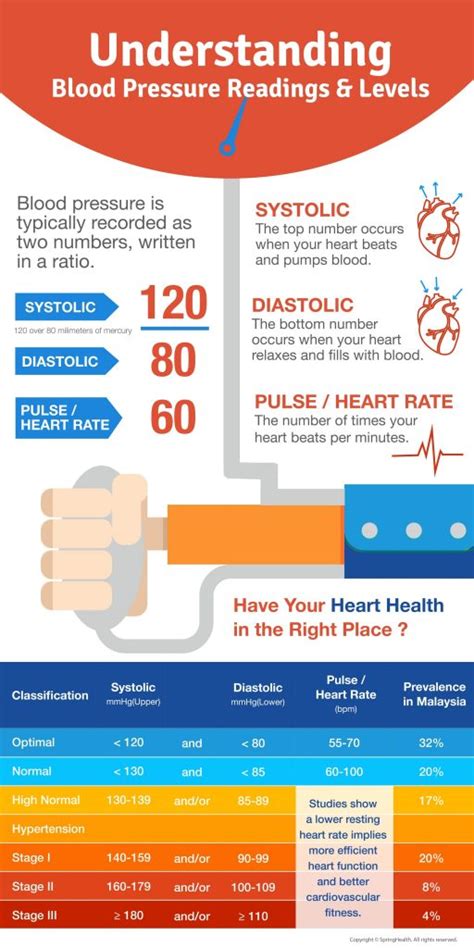Intro
Discover 5 ways to achieve perfect blood pressure, reducing hypertension risks with lifestyle changes, diet, exercise, stress management, and monitoring techniques for optimal cardiovascular health.
Maintaining perfect blood pressure is crucial for overall health and wellbeing. High blood pressure, also known as hypertension, can lead to serious health issues such as heart disease, stroke, and kidney disease. On the other hand, low blood pressure can cause dizziness, fainting, and inadequate blood flow to vital organs. It is essential to understand the importance of blood pressure management and take proactive steps to achieve and maintain perfect blood pressure.
Perfect blood pressure is typically defined as a systolic pressure of less than 120 mmHg and a diastolic pressure of less than 80 mmHg. Achieving and maintaining perfect blood pressure requires a combination of lifestyle modifications, dietary changes, and regular monitoring. In this article, we will discuss the importance of perfect blood pressure, its benefits, and provide tips on how to achieve and maintain it.
The importance of perfect blood pressure cannot be overstated. It is a critical aspect of overall health and wellbeing, and maintaining it can help prevent a range of serious health issues. By understanding the factors that influence blood pressure and taking proactive steps to manage it, individuals can reduce their risk of developing hypertension and related health problems. In the following sections, we will delve deeper into the benefits of perfect blood pressure, its working mechanisms, and provide practical tips on how to achieve and maintain it.
Understanding Blood Pressure

Factors That Influence Blood Pressure
Several factors can influence blood pressure, including genetics, age, diet, lifestyle, and underlying medical conditions. For example, individuals with a family history of hypertension are more likely to develop high blood pressure. Similarly, age can also play a role, as blood pressure tends to increase with age. Dietary factors, such as high sodium intake, can also contribute to high blood pressure, while lifestyle factors, such as physical inactivity and stress, can also impact blood pressure.Benefits of Perfect Blood Pressure

Reducing the Risk of Heart Disease
One of the primary benefits of perfect blood pressure is reducing the risk of heart disease. High blood pressure can cause the blood vessels to become damaged, leading to the formation of plaque and increasing the risk of heart attack and stroke. By maintaining perfect blood pressure, individuals can reduce their risk of developing heart disease and improve overall cardiovascular health.5 Ways to Achieve Perfect Blood Pressure

Monitoring Blood Pressure
Regular monitoring is essential for maintaining perfect blood pressure. Individuals should have their blood pressure checked regularly, and monitor their blood pressure at home using a blood pressure monitor. This can help to identify potential issues and allow individuals to take corrective action.Common Mistakes to Avoid

Seeking Medical Attention
If blood pressure is high, it is essential to seek medical attention. A healthcare professional can provide guidance on how to lower blood pressure and improve overall health. They can also monitor blood pressure and provide treatment if necessary.Conclusion and Next Steps

Final Thoughts
Maintaining perfect blood pressure requires a long-term commitment to lifestyle modifications, dietary changes, and regular monitoring. By making these changes and seeking medical attention if necessary, individuals can reduce their risk of developing hypertension and related health problems. Remember, perfect blood pressure is achievable, and with the right approach, individuals can improve their overall health and wellbeing.What is perfect blood pressure?
+Perfect blood pressure is typically defined as a systolic pressure of less than 120 mmHg and a diastolic pressure of less than 80 mmHg.
How can I achieve perfect blood pressure?
+Achieving perfect blood pressure requires a combination of lifestyle modifications, dietary changes, and regular monitoring. This includes eating a healthy diet, exercising regularly, reducing sodium intake, managing stress, and getting enough sleep.
What are the benefits of perfect blood pressure?
+Maintaining perfect blood pressure has numerous benefits, including reducing the risk of heart disease, stroke, and kidney disease. It can also help to reduce the risk of cognitive decline and dementia, as well as improve overall quality of life.
How often should I monitor my blood pressure?
+It is recommended to monitor blood pressure regularly, ideally at least once a day. This can help to identify potential issues and allow individuals to take corrective action.
What should I do if my blood pressure is high?
+If blood pressure is high, it is essential to seek medical attention. A healthcare professional can provide guidance on how to lower blood pressure and improve overall health. They can also monitor blood pressure and provide treatment if necessary.
